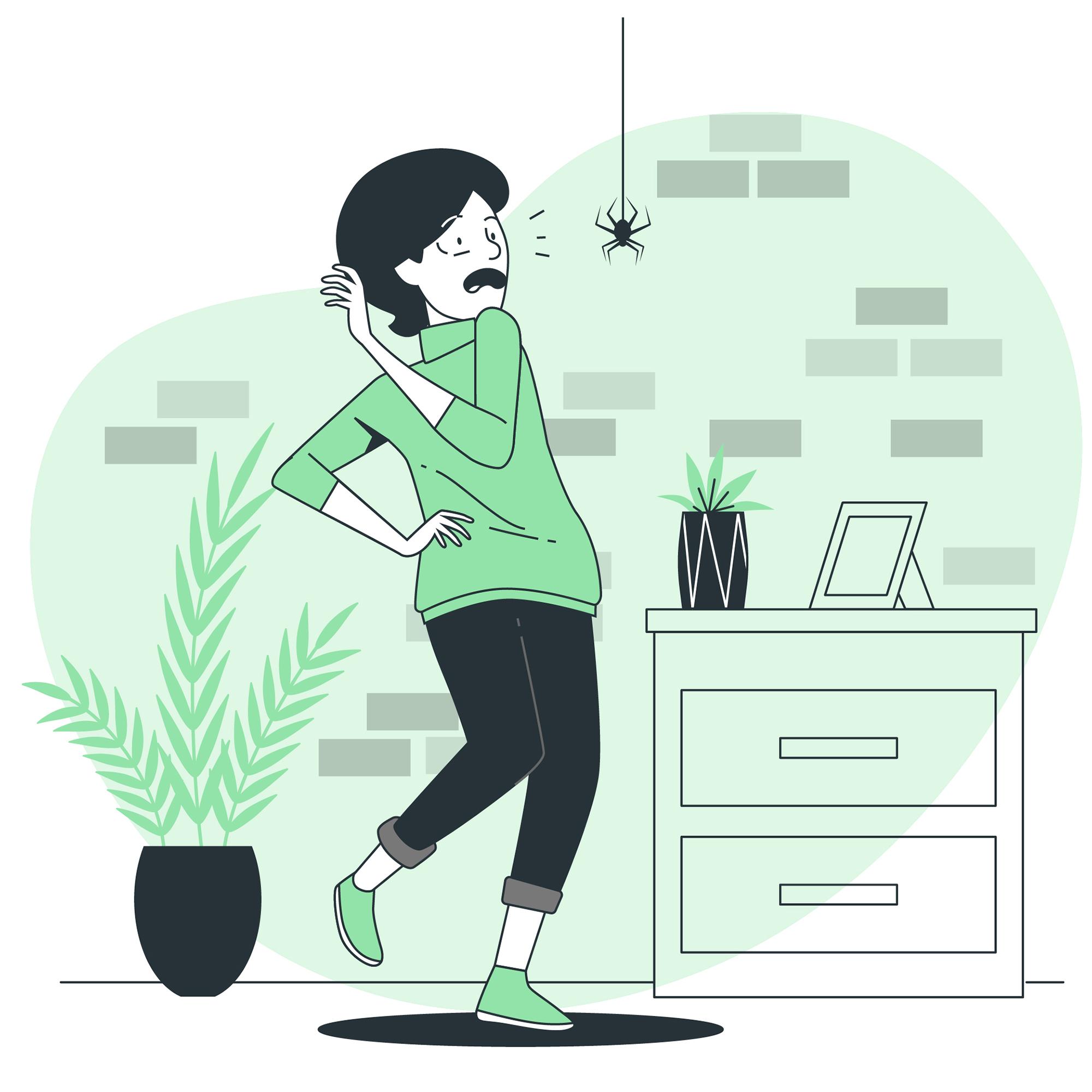Overview
Arachnophobia, or the intense fear of spiders, is one of the most common specific phobias worldwide, including in India. Though spiders are generally not dangerous in India, the fear of them can cause extreme anxiety, avoidance behaviour, and distress in affected individuals. Cultural beliefs, personal experiences, and media representations contribute to the persistence of arachnophobia in the Indian population.
Key Facts
- Prevalence in India: While no extensive studies specifically target arachnophobia in India, global research suggests that around 3-7% of the population may suffer from severe arachnophobia.
- Gender Disparity: Women are more likely to experience arachnophobia compared to men.
- Cultural Influence: Spiders are often associated with myths and superstitions, exacerbating fear responses.
- Common Triggers: Sudden spider appearances, their movements, or exposure to spider-related imagery can trigger panic responses.
- Impact on Daily Life: Severe cases may lead to avoidance of outdoor activities, anxiety disorders, and distress in daily tasks.
Symptoms and Patterns
Arachnophobia manifests in physical, emotional, and behavioural symptoms:
- Physical Symptoms:
- Increased heart rate, sweating, dizziness.
- Shortness of breath, nausea, trembling.
- Panic attacks in extreme cases.
- Emotional and Cognitive Symptoms:
- Irrational fear or dread of spiders.
- Catastrophic thoughts about being harmed by spiders.
- Extreme anxiety when encountering spiders or spider-related imagery.
- Behavioural Symptoms:
- Avoidance of places where spiders may be present (gardens, basements, storerooms).
- Over-checking rooms and surroundings for spiders.
- Seeking reassurance from others when in fear-inducing situations.
Risk and Protective Factors
Risk Factors:
- Genetic Predisposition: A family history of phobias or anxiety disorders.
- Early Traumatic Experiences: Negative childhood experiences involving spiders.
- Cultural Conditioning: Fear reinforced through societal beliefs, myths, or media portrayals.
- Comorbid Anxiety Disorders: Individuals with generalized anxiety disorder (GAD) are more prone to developing phobias.
Protective Factors:
- Exposure Therapy: Gradual, controlled exposure to spiders can reduce fear responses.
- Cognitive Restructuring: Addressing irrational beliefs associated with spiders.
- Mindfulness and Relaxation Techniques: Reducing anxiety through meditation and breathing exercises.
Treatment and Care
Overcoming arachnophobia requires a combination of psychological and behavioural strategies:
- Cognitive-Behavioural Therapy (CBT): Helps individuals identify and challenge irrational fears.
- Exposure Therapy: Gradual exposure to spiders in a controlled setting to desensitize fear responses.
- Virtual Reality Therapy: Emerging techniques use VR simulations to expose individuals to spider-related stimuli.
- Medication: Anti-anxiety medications or beta-blockers may be used in severe cases but are not a primary solution.
Psychological and Psychosocial Interventions
- Desensitization Therapy: Gradual and controlled exposure to spiders or spider images.
- Support Groups: Engaging with others facing similar phobias can reduce isolation and fear.
- Mindfulness and Stress Management: Practices like yoga and deep breathing help control anxiety.
- Psychoeducation: Increasing awareness about spiders to correct misconceptions and reduce fear intensity.
- Parental and Social Support: Encouraging children to develop positive associations with spiders rather than fear.
Conclusion
Arachnophobia, though deeply ingrained in many individuals, is a manageable condition with appropriate psychological interventions. In India, where cultural beliefs and lack of mental health awareness contribute to phobia persistence, education and therapy play a crucial role in addressing this fear. With structured treatments, support, and gradual exposure, individuals suffering from arachnophobia can regain control and reduce their anxiety toward spiders.


